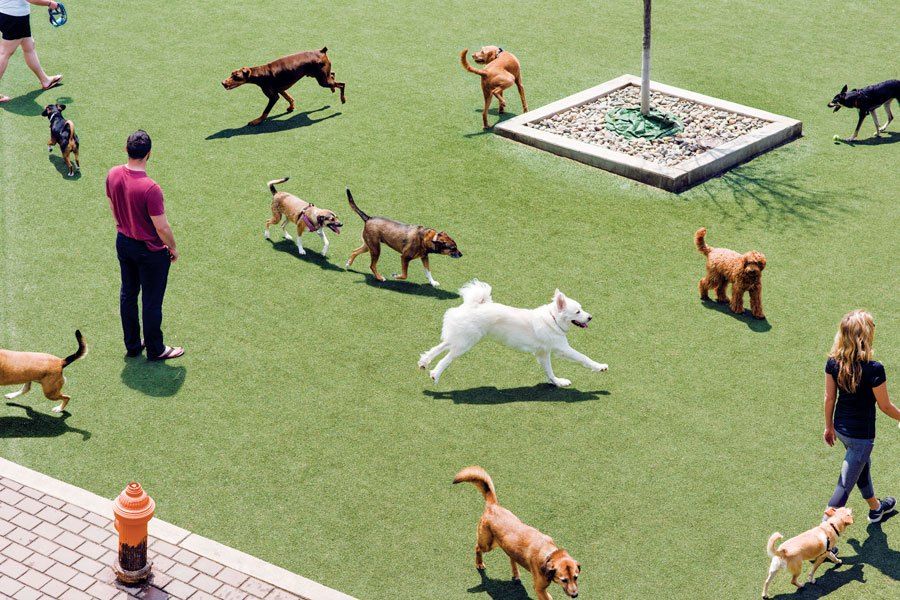Dog-Friendly Design Guide: Creating a Safe and Welcoming Environment
Explore the essentials of designing a dog-friendly business, ensuring safety, comfort, and enjoyment for our cherished canine companions. Learn how to craft an environment that delights both two and four-legged customers.

As our love for pets continues to permeate society, businesses are rapidly realizing the growing market of pet-friendly services. According to research from Roch, a pioneering startup in dog-friendly certification, millennials, who account for the largest proportion of pet ownership, display strong patronage to businesses that cater to their furry friends. This development suggests a lucrative potential for dog-friendly enterprises. However, how can establishments ensure they are genuinely safe, inviting, and conducive for dogs? The key resides in intuitive, dog-friendly design.
Understanding Dog Behavior: The Crucial First Step
Before undertaking the process of designing a dog-friendly space, it is fundamental to gain insights into dog behavior and their specific needs. Dogs, similar to humans, necessitate comfortable and safe surroundings. They may be sensitive to loud sounds, excessive heat, crowded spaces, and they require access to clean water and adequate toilet facilities. Hence, businesses should take into account these needs and strive to create an environment that goes beyond merely tolerating dogs, but actively caters to them.
Creating Dog-Friendly Spaces: Safety First
Safety should always be the foremost consideration in a dog-friendly design. Spaces need to be devoid of any potential hazards such as sharp objects, plants that are toxic to dogs, or tiny items that a curious dog might ingest. Flooring should be chosen with the aim of preventing slips and accidents – think nonslip surfaces, and any elevated areas or stairs should be equipped with secure railings to prevent falls.
Additionally, owners should always have their pets in sight, or you should have an employee present so you can offer 'dog sitting services', eitherway the dogs need to be watched at all times. A well-designed space will allow for maximum visibility while also minimizing opportunities for dogs to dart out of open doors or gates. The use of strategic barriers or dog gates can ensure dogs stay within designated areas.
Comfort: The Silent Requirement
Comfort is another vital component of a dog-friendly environment. Depending on your business type, it would be advisable to provide dog beds, blankets, or crates where dogs can relax, sleep, or take refuge if they feel overwhelmed. Soft, washable materials are a great choice, as they can be easily cleaned in case of accidents.
Temperature control is another important consideration. Ensure that your establishment is adequately ventilated and remains cool during hot weather. Remember to provide plenty of fresh water and, if possible, healthy dog treats approved by pet nutritionists.
Outdoor Spaces: An Added Luxury
If your business incorporates an outdoor area, it offers ample opportunities for dog-friendly design. A secure, fenced dog play area can serve as an outstanding addition, allowing dogs to socialize and play off-leash while their owners relax nearby. This feature is not only entertaining for dogs but also promotes physical exercise, which is beneficial for their health.
A well-maintained lawn or turf area can also double as a bathroom for dogs, especially if you have the resources to clean it regularly. Providing poop bags and designated disposal bins will encourage customers to clean up after their pets, ensuring the space remains clean and inviting for future use.
Educating Staff and Customers: A Necessary Endeavor
Creating a dog-friendly business involves more than just the physical environment—it also revolves around the attitudes and behaviors of the staff and customers. Staff members should be trained to understand basic dog behavior, know how to interact with dogs respectfully, and manage any potential dog-related conflicts or issues. It's equally important to establish and communicate clear guidelines for dog-owning customers, encouraging responsible behavior that ensures the safety and comfort of all guests – both human and canine.
Marketing Your Dog-Friendly Business: Make it Known
Once your dog-friendly space is ready to welcome its four-legged guests, it's crucial to broadcast this information to pet owners. Utilize various channels – social media platforms, your business website, local press releases – to advertise your dog-friendly status. You could also think about collaborating with animal shelters or pet product companies for promotional events, which would further publicize your commitment to accommodating pets. A quick way to enable these kinds of collaborations and to promote your business is to partner with Roch, plugging into their established partner network, and certify your business so that it is listed in their dog friendly directory.
Seeking Dog-Friendly Certification: The Stamp of Approval
For businesses aspiring to stand out in the dog-friendly market, one particularly impactful strategy is to acquire a dog-friendly certification from a reputable organization, such as Roch. A certification of this kind acts as a testament to your commitment towards establishing an environment that truly welcomes and caters to the needs of dogs. It's not merely about allowing dogs into your premises, but about providing them with an experience that ensures their comfort, safety, and overall well-being.
Obtaining such a certification elevates your appeal significantly among dog-owning customers. Seeing the Roch seal of approval, they can feel confident knowing that your business goes above and beyond to accommodate their beloved pets. This can lead to enhanced customer loyalty and patronage, as pet owners often prioritize establishments that show genuine consideration for their furry companions. To learn more about the process and benefits of securing the Roch Standard, we encourage you to explore further here.
Conclusion
The journey towards creating a dog-friendly environment involves understanding dog behavior, designing a space that ensures safety and comfort, training staff appropriately, and marketing your dog-friendly status effectively. By adhering to these steps, businesses can tap into the burgeoning market of pet ownership, fostering a loyal and appreciative customer base.
As societal recognition of the significance of pets in our lives continues to grow, dog-friendly design is increasingly becoming an essential aspect of business strategy. Remember, becoming dog-friendly is not about merely tolerating dogs but making them feel as welcome and valued as their human counterparts. Through considerate design and a genuine love for dogs, businesses can create spaces that truly become a dog's second home.


